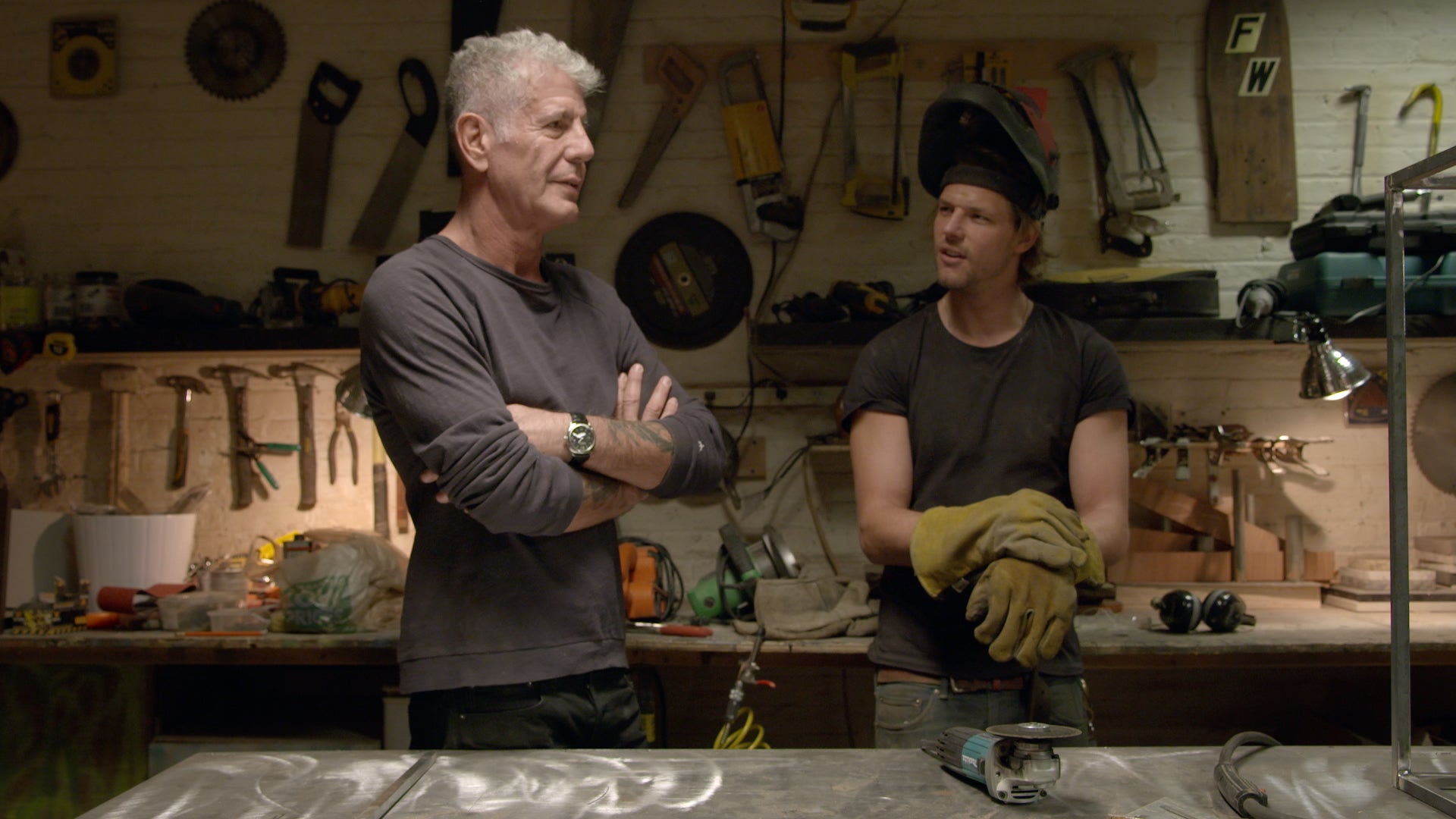Anthony Bourdain’s other obsession is showcased in his web show, “Raw Craft”
Anthony Bourdain, the daring TV personality with a global foodie fan base, has had plenty of fun mocking hipsters as he has traversed the world sampling off-the-beaten-path indigenous foods.


Anthony Bourdain, the daring TV personality with a global foodie fan base, has had plenty of fun mocking hipsters as he has traversed the world sampling off-the-beaten-path indigenous foods.
But lately, the former chef has broadcast from the heart of America’s hipster craft revival movement. Raw Craft is his web video series featuring little-known artisans who make handcrafted, bespoke designs—including some sporting the beards and tattoos of what’s become known internationally as “the Brooklyn look.”
Bourdain tells Quartz that he’s willing to overlook “facial grooming choices” when he sees real talent. From a trailblazing woman blacksmith in North Carolina, a typographer in San Francisco, to a saxophone designer in New Orleans, with every episode of Raw Craft, Bourdain shows his fans how craftspeople behind beautiful, handcrafted objects share a similar genius to the cooks behind great dishes.
Like restaurants who see their businesses spike after a televised Bourdain visit, furniture maker Mats Christeen has received more calls since the Raw Craft episode about his work aired. Based in Greenpoint, Brooklyn, Christeen is a former hockey player turned “improvisational carpenter,” shaping his furniture without drawings or measurements. “Handmade furniture is kind of a new challenge every time,” he tells Quartz. “It’s very calming for me to just shut the door to my workshop, put on some music and get totally immersed in a project.”
At times, the show can feel like a commercial for the series’s sponsor, Balvenie. The Scottish whiskey brand that Bourdain started endorsing last year (and a big supporter of the American Craft Council).
Each gorgeously shot 10-minute Raw Craft episode is worth watching, if only to see Bourdain ribbing these rather earnest artisans, wielding chisels, forging irons, needles. But the show as a whole offers an inspiring dive into the diverse handicrafts revival blossoming across the US.
Quartz spoke to Bourdain about Raw Craft and how it fits in with the rest of his life’s work.
What made you segue from food to design? Do chefs and craftsmen have a common quality you admire?
I don’t see it as a segue from food to design; it’s simply another area of curiosity and appreciation for me. Cooks and chefs are practicing a trade and a craft, a skill learned through years of trial and error and repetition.
Whether it’s a story, a meal or a beautiful object—is there a guiding personality behind this? When you hold this object or use this thing are you connecting with its creator, and the message? Blacksmith Elizabeth Brim is one example of this. Her work speaks volumes about who she is and the life she’s led. Often the chefs or craftsmen that fascinate me most aren’t people who do many things brilliantly, but those who exercise a singular devotion to a specific craft.
What kinds of craftspeople excite you?
The group of craftspeople we’ve featured thus far are mostly a reflection of my personal prejudices, likes and dislikes, and passions. The kinds of craftspeople who excite me most tend to be those who have chosen a solitary, often difficult path, doing a very hard or niche thing that all of good sense and conventional business acumen would indicate are foolish aspirations. To dedicate your life to blacksmithing, or to quit your well-paying corporate job to become a luthier and hand-make guitars that take weeks—these are crazy, romantic, amazing things to do. And I’m inspired and encouraged by these people.
In the introduction to Raw Craft, you say “the word ‘handcrafted’ gets thrown around these days.” Were you alluding to the coterie of Brooklyn hipster-type makers?
There are sadly too many examples. The “artisanal potato chip.” The fact that every restaurant in LA and NY advertise “house-made charcuterie.” A lot of it is good, but a lot of it is not that good, and that restaurant would be better off bringing it in from someone who knows what they’re doing.
I feel like you can begin to tell the difference when you see those that choose to do things the old-school way, the long way, the stupid way—the way that may not be the most profitable, commercial or efficient. Those are true craftsmen. People who are using knowledge and skills honed over many years to create beautiful work.
And yes, maybe I am alluding a bit to the bearded hipster-type out there, but among the pretentious frauds in any city, there are surely artisans making something incredible work. If I respect the work, I respect you, regardless of your personal fashion aesthetic or your facial grooming choices.
How would you describe your design sensibility?
I wouldn’t consider myself a connoisseur of design. But I often find myself drawn to what can only be described as the innately strange and beautiful. For example, last year as part of the American Craft Council Fellowship Awards, another part of my partnership with The Balvenie, we met these guys, a father and son, who make these amazingly complex origami sculptures—they call it computational origami. It serves no function, and when I first discovered them, I thought “why on earth would you work so hard to make something so useless?” But it was incredibly beautiful, and it made me happy to look at. Beauty in its simplest form.